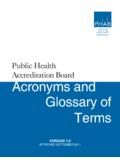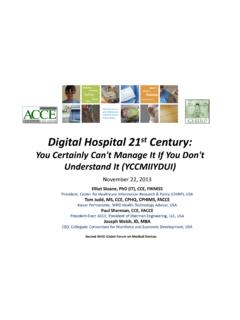Transcription of Evidence-Based Practice Registries
1 - August, 2011 EBP registry Area of Focus Summary Inclusion Qualifications 1. Strengthening America s Families Juvenile delinquency prevention Collaboration of OJJDP and the University of Utah. The Family Strengthening Project identified 34 programs after a nationwide nomination and selection process. The chosen programs addressed a wide range of youth and family problems. Program developers submitted a 10-page program description, along with supplemental materials such as relevant research. This included program history, theoretical assumptions, expected outcomes, staffing requirements, evaluation methodology, etc. Five committees convened to determine program rating based on several factors. Each program was rated independently based on the criteria listed. Although ratings took place in 1997 and 1999, this matrix includes ratings from the more recent effort.
2 Exemplary I Experimental design with randomized sample and replication by an independent investigator Outcome data from the numerous research studies show clear evidence of program effectiveness Exemplary II Experimental design with randomized sample Outcome data from studies show evidence of program effectiveness Model Experimental or quasi-experimental design with few/no replications Outcome data indicate program effectiveness; data are not as strong in demonstrating program effectiveness Promising Limited research and/or employs non-experimental designs Data appear promising but requires confirmation using scientific techniques Theoretical base and/or some other aspect of the program is sound 2. Office of Juvenile Justice and Delinquency Prevention (OJJDP) Model Programs Guide ( ) Youth programs OJJDP maintains a Model Program Guide of over 200 programs designed for the prevention and intervention of areas such as mental health, substance abuse, and education.
3 Their website states that ratings are based on four dimensions of effectiveness: conceptual framework of program, program fidelity, evaluation design, and empirical evidence demonstrating prevention/reduction of problem behavior; reduction of risk factors; or increase in protective factors. Reviewers rate and score program evaluation studies to determine the appropriate category. Exemplary Demonstrate robust empirical findings Reputable conceptual framework Experimental design Effective Adequate empirical findings Sound conceptual framework Quasi-experimental design Promising Promising (perhaps inconsistent) empirical findings Reasonable conceptual framework Limited evaluation design (single group pre- post-test) that requires causal confirmation EBP registry Area of Focus Summary Inclusion Qualifications 3. Coalition for Evidence-Based Policy ( ) Wide range Nonprofit, nonpartisan group that utilizes an advisory board of national experts to identify interventions.
4 Goal is to inform Congress, Executive Branch agencies, and other agencies of best Practice interventions. Used an internally-developed checklist to assess if randomized controlled trials produced valid evidence . Coalition conducted literature searches and contacted topic experts to determine which programs met criteria. Top Tier Interventions shown in well-conducted randomized controlled trials, preferably conducted in typical community settings, to produce sizeable, sustained benefits to participants and/or society Near Top Tier Interventions shown to meet all elements of the Top Tier standard in a single site, and only need one additional step to qualify as Top Tier a replication trial establishing that the sizeable, sustained effects found in that site generalize to other sites Promising Been found to be promising by staff, but either have not met Top Tier standards or have not yet been reviewed 4.
5 National registry of evidence -VBased Programs and practices (N-REPP) ( ) Mental illness/ substance abuse Operated by Substance Abuse Mental Health Services Alliance (SAMHSA); goal is to provide public with interventions that have been scientifically tested. Submissions are voluntarily made by program developers and N-REPP chooses to evaluate those that meet minimum requirements. Reviewers examine quality of research and readiness for dissemination. Reviewers rate quality of research conducted on a 0-4 scale for the following areas: Reliability of measures Validity of measures Intervention fidelity Missing data and attrition Potential confounding variables Appropriateness of analysis 5. Surgeon General's Report (2001) ( ) Youth violence and crime prevention An extensive literature review generated this 2001 report compiled by Dr. David Satcher along with staff from CDC, NIH, and SAMHSA in reaction to school violence at Columbine High School in 1999.
6 Much of the information was drawn from 7 studies published in the 90s, along with data collected from datasets from various agencies. Programs were then rated based on criteria listed. Model Experimental or quasi-experimental design Significant deterrent effects on: o Violence or serious delinquency (Level 1) o Any risk factor for violence with a large effect (.30 or greater) (Level 2) Replication with demonstrated effects Sustainability of effects Promising: Experimental or quasi- experimental design Significant deterrent effects on: o Violence or serious delinquency (Level 1) o Any risk factor for violence with effect size of .10 or greater (Level 2) Either replication or sustainability of effects EBP registry Area of Focus Summary Inclusion Qualifications 6. Blueprints for Violence Prevention ( ) Violence, drug, and crime prevention A project of the Center for the Study and Prevention of Violence at the University of Colorado.
7 Programs are reviewed by staff and an advisory board. To date more than 900 programs have been assessed. Claim to have the most rigorous tests of effectiveness. Criteria given most weight include evidence of deterrent effect with strong research design, sustained effects and multiple site replications. Model: Experimental or quasi-experimental design evidence of deterrent effect on one outcome Sustained effects for one year post-treatment Replication at more than one site Promising: Experimental or quasi-experimental design evidence of deterrent effect on one outcome 7. California Evidence-Based Clearinghouse (CEBC) ( ) Child welfare The California Department of Social Services selected the Chadwick Center for Children and Families and the Child and Adolescent Services Research Center (CASRC) to form CEBC. A state advisory committee comprised of child welfare leaders and a national scientific panel of five members rate each program.
8 They identify an individual with expertise in selected topic areas (such as home visiting) and choose relevant programs that have strong empirical research and are marketed and used in California. They identify a representative from each program and request general information about the program. All relevant literature is identified and a team of at least three raters review the research. The programs are rated based on the listed criteria. Well-Supported: No evidence suggesting program causes harm on recipients compared to its likely benefits Program has a book, manual, etc. describing specific program components and method for administering At least two rigorous randomized controlled trials (RCTs) settings demonstrate the Practice to be superior to comparisons. RCTs have been reported in published, peer-reviewed literature Sustained effects for one year post-treatment Use of valid, reliable outcome measures administered consistently and accurately If multiple outcome studies have been conducted, the overall weight of the evidence supports the benefit of the Practice Supported: No evidence suggesting program causes harm on recipients compared to its likely benefits Program has a book, manual, etc.
9 Describing specific program components and method for administering At least one rigorous randomized controlled trial (RCTs) demonstrates the Practice to be superior to comparisons. RCTs have been reported in published, peer-reviewed literature. Sustained effects for 6 months post-treatment Use of valid, reliable outcome measures administered consistently and accurately If multiple outcome studies have been conducted, the overall weight of the evidence supports the benefit of the Practice Promising No evidence suggesting program causes harm on recipients compared to its likely benefits Program has a book, manual, etc. describing specific program components and method for administering At least one study utilizing some form of control has shown the Practice 's benefit over the placebo, or found it to be comparable to or better than an appropriate comparison Practice . The study has been reported in published, peer-reviewed literature If multiple outcome studies have been conducted, the overall weight of evidence supports the benefit of the Practice CEBC also identified three more categories: evidence Fails to Demonstrate Effect, Concerning Practice and Not Able to Be Rated.
10 These were not included in this chart. EBP registry Area of Focus Summary Inclusion Qualifications 8. Promising practices network (PPN) ( ) Positive outcomes for children Operated by the RAND Corporation, a nonpartisan think tank, PPN is comprised of individuals and agencies nationwide such as The Colorado Foundation for Families and Children, The Family and Community Trust, Georgia Family Connection Partnership and The Foundation Consortium for California's Children & Youth. No formal applications are required for program consideration. They do not require programs to have been replicated, or that program evaluations have been in peer-reviewed journals. Programs are rated based on listed criteria. Proven: Program must directly impact PPN identified indicators At least one outcome is changed by at least 20% or standard deviations At least one outcome with a substantial effect size is statistically significant at the 5% level Study design uses an experimental or quasi-experimental design Sample size of evaluation exceeds 30 in treatment and comparison groups Program evaluation is publicly available Promising: Program impacts an intermediary outcome for which there is evidence of it s association with one of the PPN indicators Outcome change is significant at the 10% level Change in outcome is more than 1% Study has a comparison group, but it may exhibit some weaknesses Sample size of evaluation exceeds 10 in both the treatment and comparison groups Program evaluation is publicly available Not Listed on the Site.
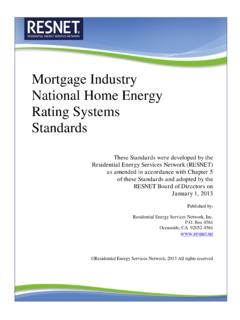
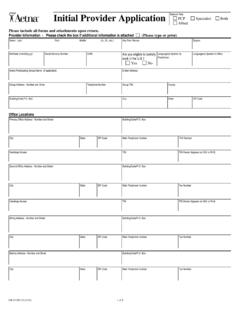
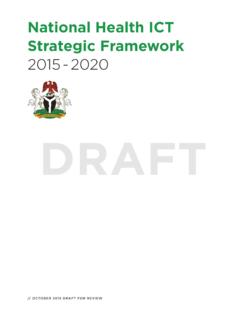
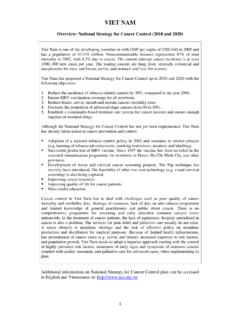
![Home [www4.unfccc.int]](/cache/preview/f/1/c/d/7/9/9/0/thumb-f1cd7990e2e0f9d979c349afb9603733.jpg)
